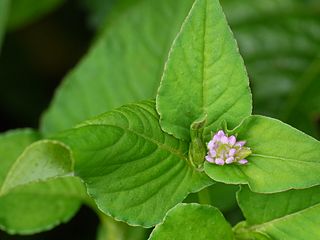Persicaria nepalensis
| Persicaria nepalensis | |
|---|---|

| |
| Scientific classification | |
| Kingdom: | Plantae |
| Clade: | Tracheophytes |
| Clade: | Angiosperms |
| Clade: | Eudicots |
| Order: | Caryophyllales |
| Family: | Polygonaceae |
| Genus: | Persicaria |
| Species: | P. nepalensis
|
| Binomial name | |
| Persicaria nepalensis (Meisn.) H.Gross[1]
| |
| Synonyms[2] | |
| |
Persicaria nepalensis is a species of flowering plant in the family Polygonaceae, native to eastern Africa, including Madagascar, and parts of Asia. It has been introduced elsewhere: parts of Europe (including Great Britain), North America (including British Columbia, Connecticut, Massachusetts, New York and Pennsylvania) and northern South America.[2] The species was first described as Polygonum nepalense by Carl Meissner in 1826, and transferred to Persicaria by Hugo Gross in 1913.[1] (The same transfer was made later, in 1934, by Kingo Miyabe; as of 3 May 2019[update], Plants of the World Online used this transfer for the authorship of the combination.[2])
-
White flowers
-
Pink flowers
References[edit]
- ^ a b "Plant Name Details for Persicaria nepalensis (Meisn.) H.Gross", The International Plant Names Index, retrieved 2019-05-03
- ^ a b c "Persicaria nepalensis (Meisn.) Miyabe", Plants of the World Online, Royal Botanic Gardens, Kew, archived from the original on December 17, 2018, retrieved 2019-05-03


